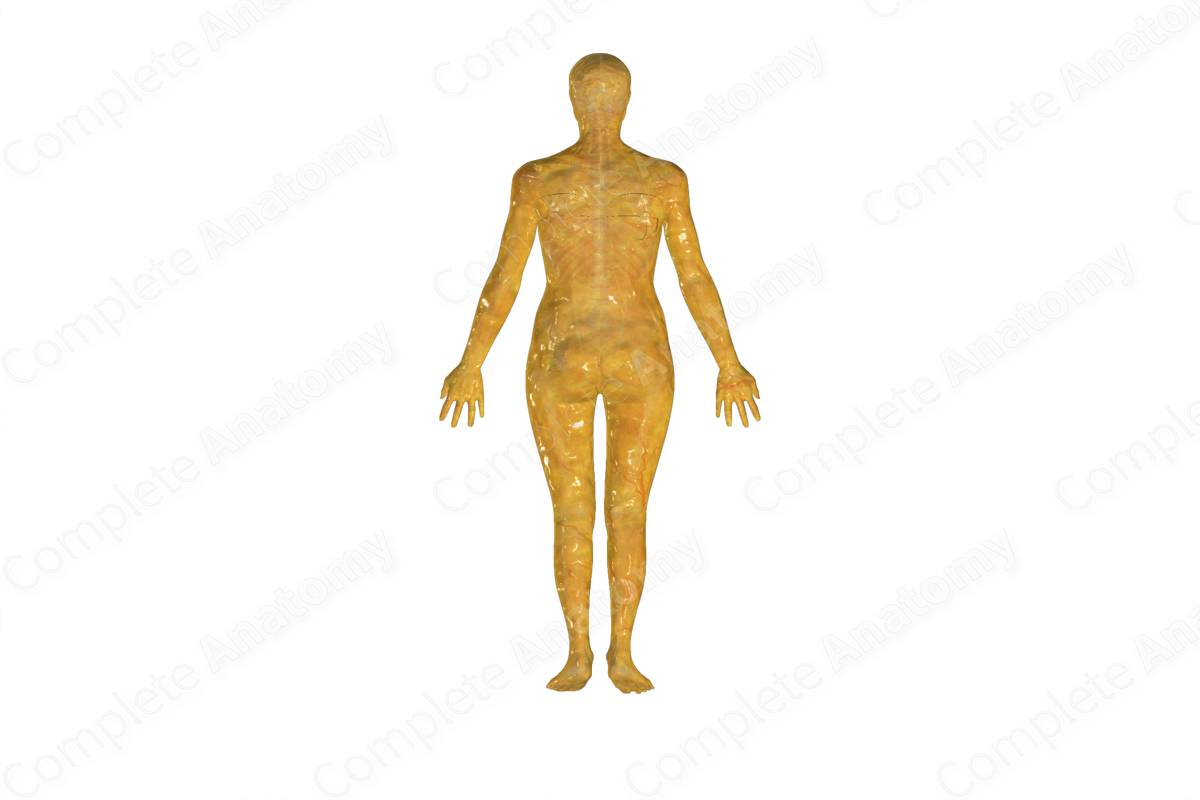
Subcutaneous Tissue
Quick Facts
The subcutaneous tissue (aka superficial fascia or hypodermis) is the connective tissue layer located immediately deep to the dermis. It consists of loose connective tissue and adipose tissue (aka fat).
This layer contains blood vessels, nerves and lymphatics, which give off branches that extend into and supply the skin. Sweat glands also found in this layer.
The thickness and distribution of the fat content of the subcutaneous tissue varies throughout the body, and between different sexes and age groups.
Adipose tissue, commonly known as fatty tissue, is a type of connective tissue that primarily consists of fat cells (adipose cells). Adipose cells are specialized to synthesize and contain large globules of fat within a network of fibers. Adipose tissue is primarily found under the skin but it also deposits between muscles, in the intestines, around the heart, and elsewhere. The fat stored in this tissue comes from dietary fats or is produced in the body.
Related parts of the anatomy




